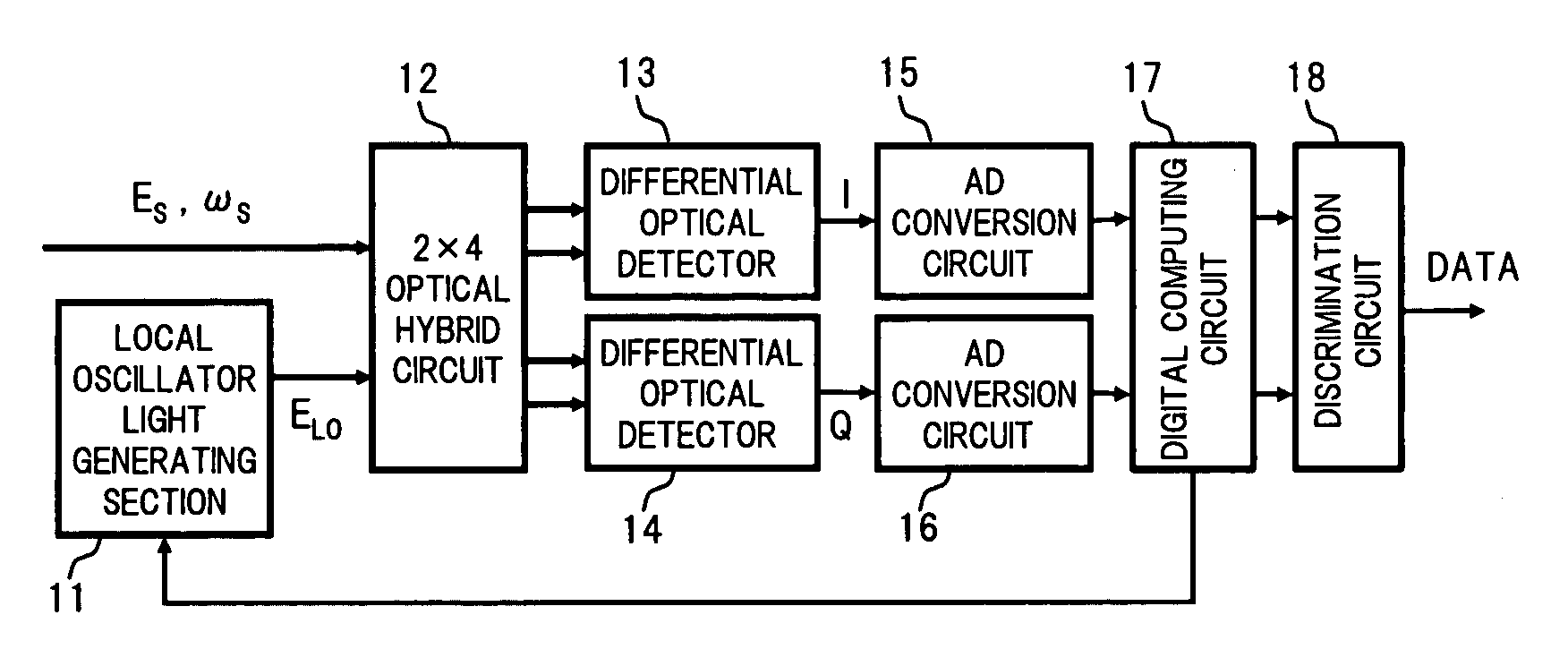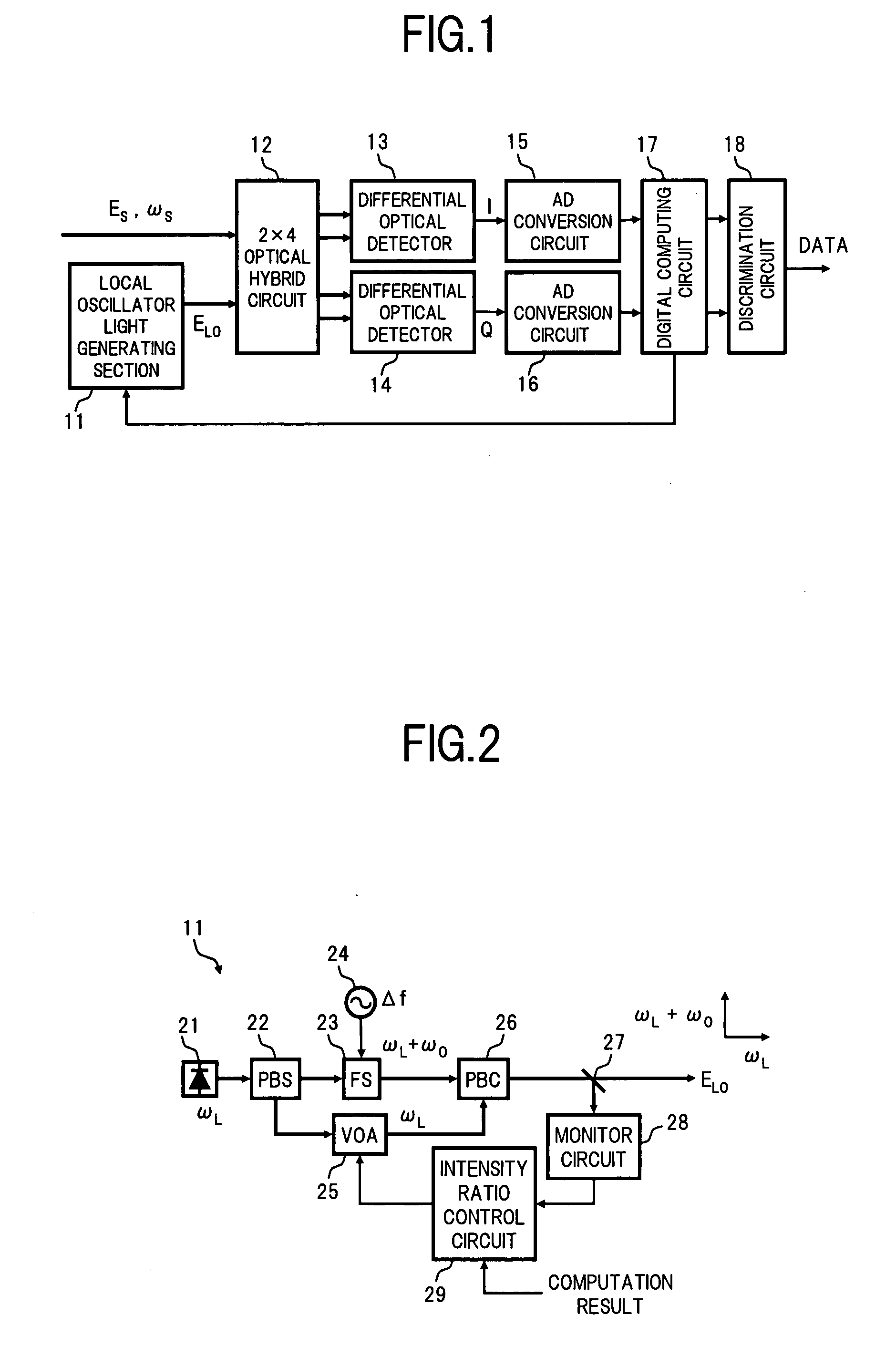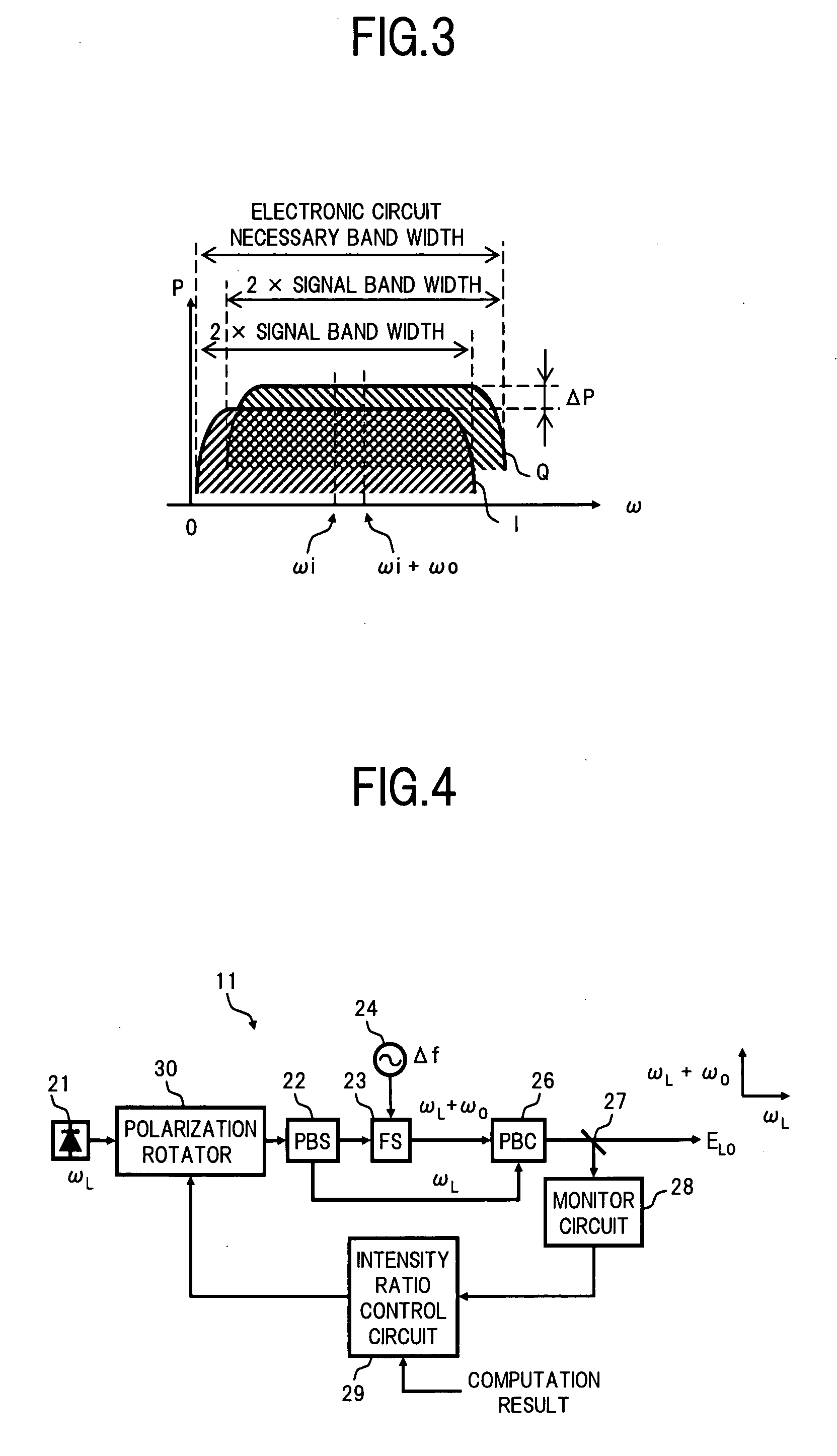Coherent optical receiver
a receiver and optical technology, applied in the field of optical receivers, can solve the problems of difficult to realize coherent optical receivers, inability to receive, and difficulty in miniaturization, and achieve the effects of small size, simple configuration, and reduced band width for photoelectric conversion sections and the lik
- Summary
- Abstract
- Description
- Claims
- Application Information
AI Technical Summary
Benefits of technology
Problems solved by technology
Method used
Image
Examples
Embodiment Construction
[0032]Hereunder is a description of a best mode for carrying out the present invention, with reference to the appended drawings. Throughout all of the drawings the same reference symbols denote the same or equivalent parts.
[0033]FIG. 1 is a block diagram showing a configuration of an embodiment of a coherent optical receiver according to the present invention.
[0034]In FIG. 1, the coherent optical receiver comprises for example: a local oscillator light generating section 11, a 2×4 optical hybrid circuit 12 serving as a combining section, differential optical detectors 13 and 14 serving as a photoelectric conversion section, AD conversion circuits 15 and 16 serving as an AD conversion section, a digital computing circuit 17 serving as a digital computing section, and a discrimination circuit 18 serving as a data discrimination section.
[0035]The local oscillator light generating section 11 generates a local oscillator light ELO in which a polarization component of optical angular freq...
PUM
 Login to View More
Login to View More Abstract
Description
Claims
Application Information
 Login to View More
Login to View More - R&D
- Intellectual Property
- Life Sciences
- Materials
- Tech Scout
- Unparalleled Data Quality
- Higher Quality Content
- 60% Fewer Hallucinations
Browse by: Latest US Patents, China's latest patents, Technical Efficacy Thesaurus, Application Domain, Technology Topic, Popular Technical Reports.
© 2025 PatSnap. All rights reserved.Legal|Privacy policy|Modern Slavery Act Transparency Statement|Sitemap|About US| Contact US: help@patsnap.com



